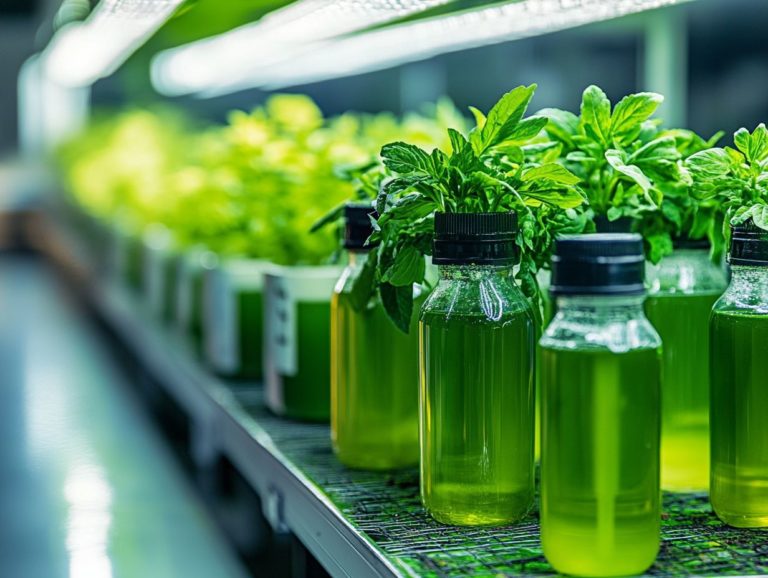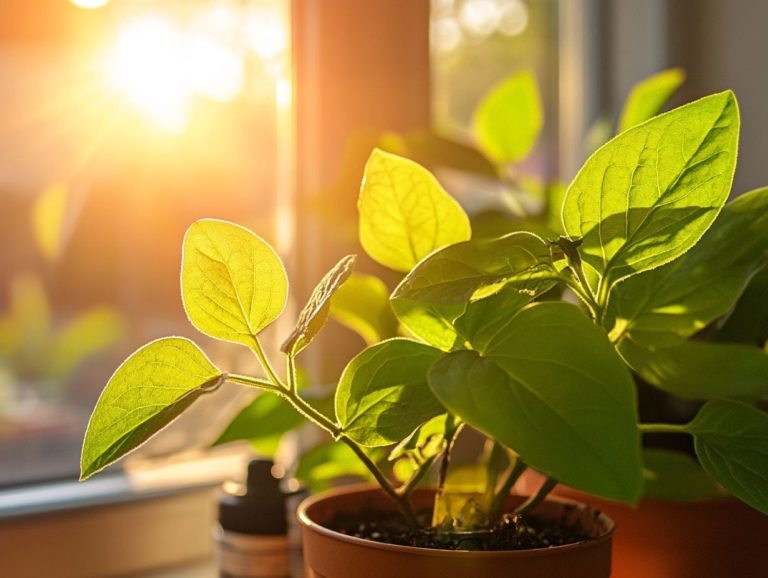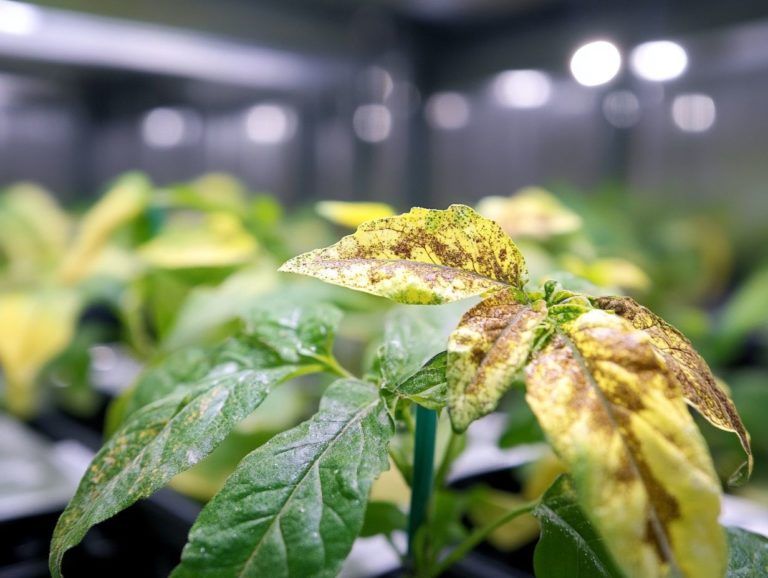How to Adjust Nutrient Solutions for Different Stages
Nutrient solutions are essential for promoting the growth and productivity of your plants, delivering the specific minerals and nutrients they require to flourish in hydroponic systems.
Understanding how to adjust these solutions at different stages, such as vegetative and flowering, can profoundly influence your plants’ health and yield. This is particularly important in urban farming.
Get ready to dive into the essential tips for your nutrient solutions! This guide will highlight crucial factors to consider, including plant type, water quality, and environmental conditions such as pH levels.
You will find valuable tips for fine-tuning your nutrient strategy to ensure success in hydroponic gardening. Engage with this information to guarantee your plants not only survive but truly thrive, leading to fresh produce year-round!
Contents
- Key Takeaways:
- Understanding Nutrient Solutions
- Adjusting Nutrient Solutions for Different Stages
- Factors to Consider when Adjusting Nutrient Solutions
- Tips for Successful Nutrient Solution Adjustments
- Frequently Asked Questions
- How do I adjust nutrient solutions for the vegetative stage?
- Can I use the same nutrient solution for all stages of plant growth?
- How often should I adjust the nutrient solution during different stages of growth?
- What is the best way to adjust nutrient solutions for the flowering stage?
- What should I do if I notice nutrient deficiencies during a specific stage of growth?
- Can I use organic nutrient solutions for all stages of plant growth?
Key Takeaways:

- Nutrient solutions are vital for healthy plants.
- Key factors include plant type, growth stage, water quality, and pH levels.
- Regular monitoring and professional guidance are essential.
Understanding Nutrient Solutions
Understanding nutrient solutions is essential for your success in hydroponic gardening, especially for cultivating leafy greens and vegetables effectively. These solutions act as the lifeblood for healthy plant growth, delivering the key nutrients needed while enhancing nutrient efficiency throughout the year.
A well-balanced nutrient solution comprises crucial key nutrients like nitrogen, phosphorus, and potassium, alongside vital trace elements such as calcium and magnesium. By fine-tuning these solutions, your hydroponic system can achieve impressive water efficiency while promoting optimal nutrient absorption and maintaining pH balance through careful testing.
This meticulous attention to detail is key in preventing deficiencies and maximizing your yield through effective nutrient management.
What are Nutrient Solutions and Why are They Important?
Nutrient solutions are carefully mixed solutions designed for hydroponic systems, delivering essential nutrients that ensure your plants thrive with vigor and health, particularly in an urban farming context.
These solutions boast a carefully balanced blend of key nutrients, including nitrogen, phosphorus, potassium, calcium, magnesium, and essential trace elements each critical for various physiological processes and nutrient absorption. Unlike traditional fertilizers that slowly release nutrients into the soil, nutrient solutions provide an immediate supply directly to the roots, enhancing nutrient levels efficiently. This direct approach not only boosts nutrient absorption but also significantly reduces the risk of damage from too much nutrients, which can harm your plants.
Many growers are now turning their attention to organic nutrient solutions, striving to achieve a sustainable balance that promotes plant vitality while preserving the integrity of the environment through eco-friendly practices.
Adjusting Nutrient Solutions for Different Stages
Adjusting nutrient solutions is crucial for optimizing plant growth at various stages of cultivation, including the vegetative, flowering, and harvesting phases. Each stage has its own specific nutrient concentrations and pH levels necessary for healthy development and maximizing yield.
By grasping the intricate needs of plants, such as the heightened demand for nitrogen during early growth and the increased phosphorus and potassium requirements during flowering, you can expertly tailor your hydroponic system to deliver the precise nutrient solution by understanding hydroponic nutrient solutions for each growth cycle.
Vegetative Stage
During the vegetative stage, your plants focus on developing robust foliage. You ll want to provide a nutrient solution that is rich in nitrogen. This key nutrient encourages healthy leaf growth and promotes chlorophyll synthesis.
Chlorophyll not only enhances photosynthesis but also supports the overall health of your plants, ensuring vigorous growth. While other essential nutrients like phosphorus and potassium play supportive roles, nitrogen takes center stage during this phase as the primary nutrient for leafy greens.
To ensure optimal nutrient uptake, monitor the pH levels, aiming to maintain them between 6.0 and 7.0. Fluctuations can affect nutrient absorption. If conditions swing too acidic or alkaline, nutrient absorption can suffer, leading to potential deficiencies in essential nutrients.
Regular testing and adjustments will help you maintain a favorable growing environment. This allows your leafy greens to thrive and flourish throughout their development, optimizing nutrient delivery.
Flowering Stage
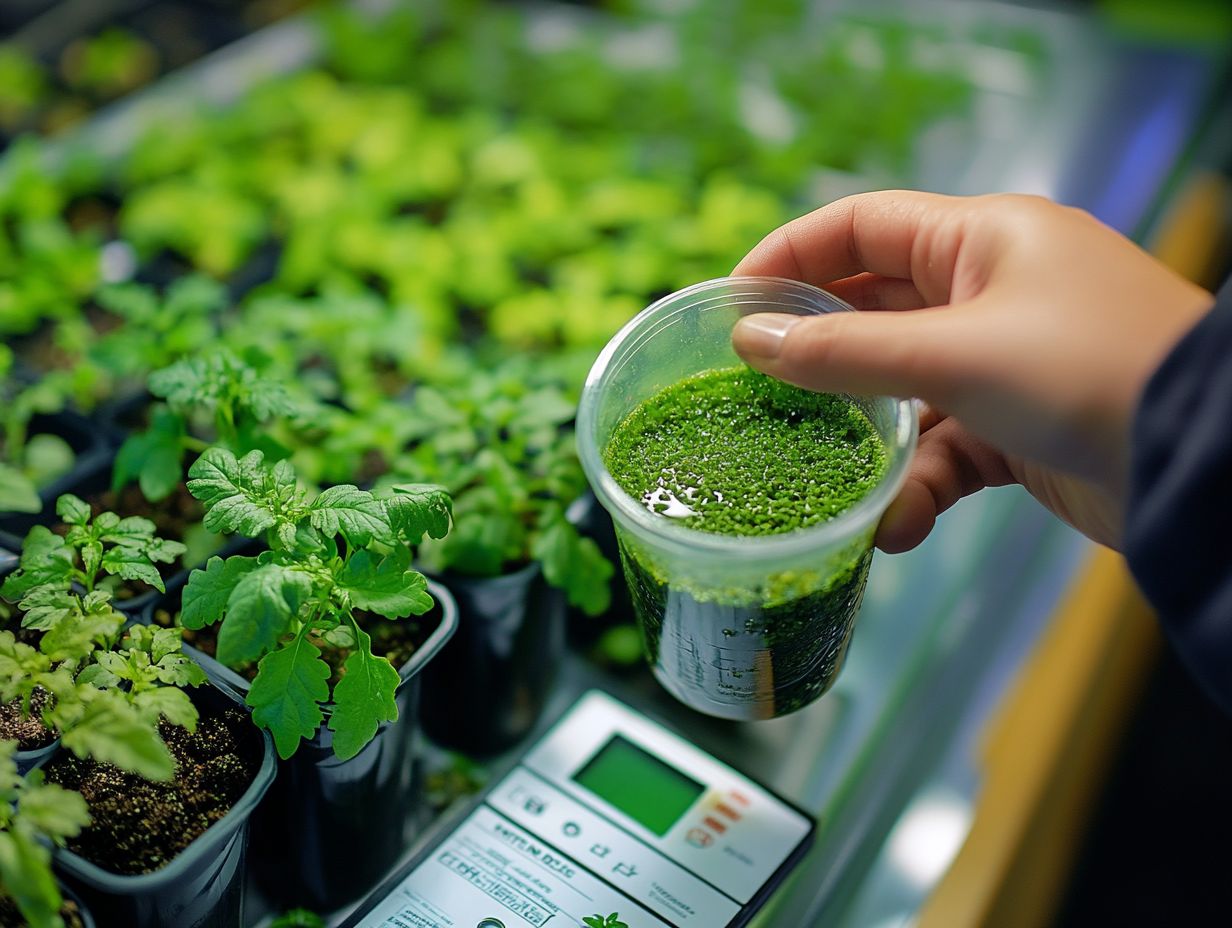
Now is the time to boost your plants with nutrient solutions! In the flowering stage, your approach to plant nutrition must evolve. Focus on a nutrient solution that highlights phosphorus and potassium two essential nutrients for developing flowers and fruits.
As your plants enter this pivotal phase, their demand for these nutrients will surge. This demand impacts not only the quality but also the quantity of their blooms, which is crucial for maximizing yield.
To foster optimal growth, adjust your nutrient solutions to include elevated levels of phosphorus to aid in root and flower formation, and potassium to bolster overall plant vigor and resilience against stress, especially in hydroponic systems.
Regularly monitoring pH levels will help you maintain the ideal balance of nutrients in your solution, ensuring efficient nutrient absorption. Observing leaf color and growth patterns provides crucial insights into whether your plants are receiving the right nutrient levels to thrive during this vital growth period. For further guidance, check out how to use nutrients for optimal hydroponic growth.
Harvesting Stage
During the harvesting stage, provide your plants with a nutrient solution that maintains balanced levels while delivering essential micronutrients. This is key to maximizing yield quality and overall health.
At this point, adjustments in nutrient delivery are crucial. Your plants’ demand for specific elements can significantly impact their overall health and productivity, particularly for important nutrients like calcium and magnesium.
Ensuring adequate levels of vital nutrients such as potassium and phosphorus enhances not only the growth process but also the flavor and texture of your crops. To achieve this, learning how to balance nutrient solutions in hydroponics is essential, leading to fresher produce.
Monitoring and regulating micronutrient availability such as iron, manganese, and zinc is essential for optimizing nutrient absorption. This meticulous management leads to improved crop vigor and a more substantial harvest. Achieve the highest possible yield while maintaining the quality that consumers expect from hydroponic systems.
Factors to Consider when Adjusting Nutrient Solutions
When adjusting nutrient solutions, several critical factors demand your attention. Consider the type of plant you’re working with, its specific growth stage, the quality of the water, pH levels, and various environmental factors that impact nutrient availability.
Each of these elements can significantly influence nutrient absorption and the overall health of your plants, contributing to their growth and productivity.
Plant Type and Growth Stage
The type of plant you choose and its growth stage play a crucial role in creating the right nutrient solutions for vibrant, healthy growth.
Different plant categories, such as leafy greens and fruit-bearing varieties, have unique nutrient needs. Leafy greens thrive with higher nitrogen levels, while fruiting plants require more potassium and phosphorus as they transition into the flowering stage. To ensure optimal growth, it’s important to know how to adjust nutrient solutions for pH.
To foster optimal growth, fine-tuning your nutrient delivery system is imperative. Customize the solution to match the plant’s life cycle and ensure adequate nutrient levels throughout. Regularly monitoring and adjusting pH levels and nutrient concentrations can significantly enhance yields and promote vigorous plant development. For more detailed guidance, consider exploring understanding hydroponic nutrient solutions.
Water Quality and pH Levels
Water quality and pH levels are critical factors that directly impact nutrient solution effectiveness and plant absorption in hydroponic systems.
Keeping these variables within optimal ranges can boost growth rates and improve the quality of your yields. As a hydroponic grower, regularly monitor not just the pH, but also electrical conductivity, which indicates nutrient concentration in your solution.
By maintaining a stable balance, plants will absorb essential minerals efficiently, promoting healthier growth and reducing the risk of nutrient burn. Use reliable pH meters and conductivity testers to test your water and nutrient solutions regularly, allowing you to address imbalances swiftly.
This proactive approach minimizes plant stress and maximizes nutrient efficiency, setting the stage for successful hydroponic cultivation.
Environmental Factors
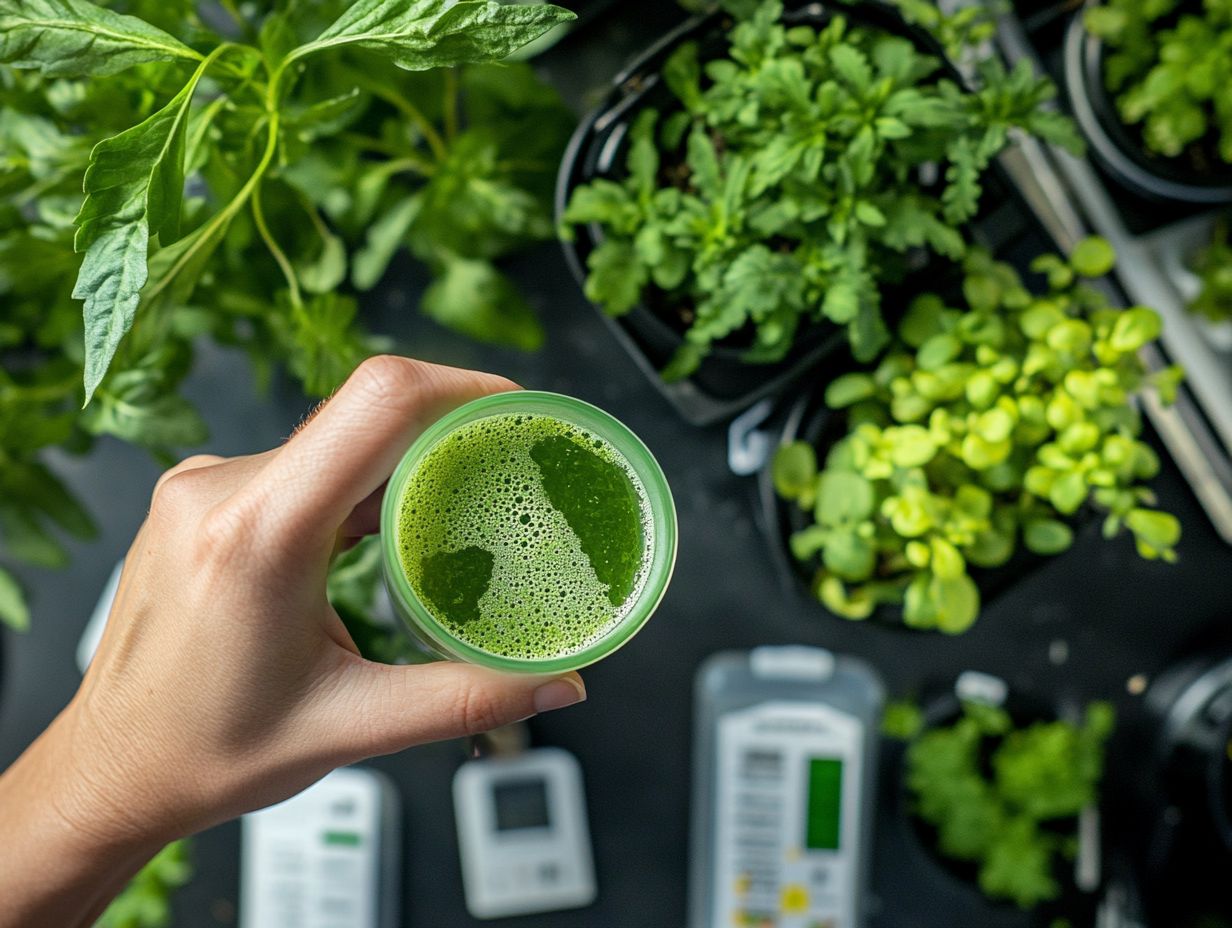
Environmental factors such as light, temperature, and humidity are crucial for how effective your nutrient solutions are in hydroponic systems.
Optimal light levels stimulate photosynthesis, boosting nutrient uptake and necessitating timely nutrient adjustments. Maintaining a stable temperature range is vital for smooth metabolic processes, while humidity impacts the transpiration process, affecting growth rates.
To create ideal conditions for your hydro-gardening endeavor, consider using automation systems to regulate these factors precisely. Employ sensors and timers to control light cycles and environmental conditions automatically, promoting enhanced plant health.
Tips for Successful Nutrient Solution Adjustments
Implementing successful nutrient solution adjustments requires careful attention to detail. Regularly test nutrient levels and seek professional advice when needed.
By staying vigilant and proactive, you can achieve optimal results in your nutrient management.
Monitoring and Adjusting as Needed
Regularly monitoring and adjusting nutrient levels is crucial for preventing deficiencies. This ensures your plants achieve optimal health and growth.
To effectively manage nutrient delivery in your hydroponics system, make it a habit to test the nutrient solution frequently using pH (the measure of acidity or alkalinity) and EC meters. If you notice signs of deficiencies like yellowing leaves or stunted growth, it often points to imbalances in essential minerals. For more guidance, learn how to choose the right nutrient solution. Staying vigilant about these indicators allows you to make timely adjustments.
Incorporating a balanced nutrient mix that includes essential small nutrients that plants need allows you to address these issues, ensuring your plants receive the right elements in the correct proportions.
Periodic analysis of plant tissue can uncover underlying problems that might not be immediately visible, such as deficiencies in iron, sulfur, and other essential nutrients. This insightful approach enables you to make informed corrections, setting the stage for vibrant, thriving plants.
Seeking Professional Advice
When you encounter persistent issues with nutrient solutions, seek professional advice to gain invaluable insights for troubleshooting and optimizing your hydroponic systems. This includes guidance on filtration and absorption techniques.
Consulting hydroponics experts aids in diagnosing specific nutrient imbalances while providing tailored solutions. These solutions can significantly enhance the health of your plants. For instance, using nutrient solutions in different growing systems allows experts to assess the unique requirements of your crops, leading to efficient nutrient uptake and minimized waste.
Their guidance promotes sustainable gardening practices and efficient urban farming techniques. Ultimately, this results in bountiful yields and improved resource management.
By tapping into expert knowledge, you can navigate nutrient interactions, turning challenges into growth opportunities! This ensures your systems remain environmentally friendly.
Watch this video to learn more about nutrient management!
Frequently Asked Questions
How do I adjust nutrient solutions for the vegetative stage?
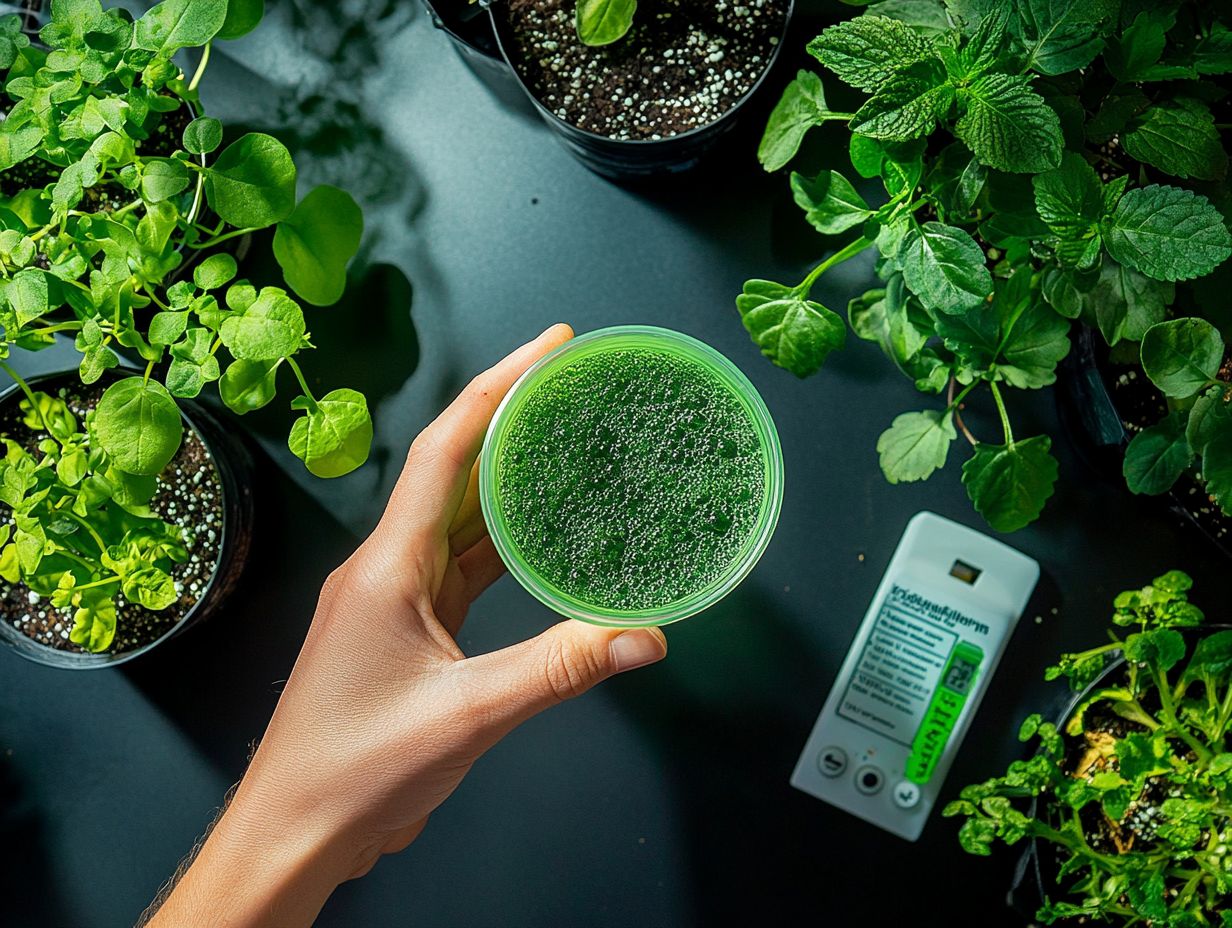
To adjust nutrient solutions for the vegetative stage, start by testing the pH level and adjusting it to the recommended range using pH up or down solutions. Follow the recommended dosage on the nutrient solution label for the specific plant being grown. Monitor the plant’s growth and adjust the nutrient solution as needed.
Can I use the same nutrient solution for all stages of plant growth?
No, it is important to adjust the nutrient solution for each stage of plant growth. Plants have different nutrient needs during each stage. Using the same solution can result in nutrient deficiencies or toxicities. Always follow the recommended nutrient schedule for the specific plant being grown.
How often should I adjust the nutrient solution during different stages of growth?
The frequency of adjustments will depend on the specific plant being grown and its growth rate. Monitor the plant’s growth and nutrient levels regularly. Typically, adjust the solution every 1-2 weeks during the vegetative stage and every week during the flowering stage.
What is the best way to adjust nutrient solutions for the flowering stage?
To adjust nutrient solutions for the flowering stage, first switch to a bloom-specific nutrient solution. Test and adjust the pH level as needed, and follow the recommended dosage on the label. Gradually increase nutrient levels during this stage to avoid shocking the plant.
What should I do if I notice nutrient deficiencies during a specific stage of growth?
If you notice nutrient deficiencies, adjust the nutrient solution accordingly. Test and adjust the pH level, increasing the dosage of the specific nutrient that is deficient. Consult a nutrient schedule for the specific plant being grown to ensure proper adjustment.
Can I use organic nutrient solutions for all stages of plant growth?
Yes, organic nutrient solutions are perfect for all stages of plant growth!
Always follow the recommended dosage on the label. Keep a close eye on your plants to ensure they are healthy and thriving!

